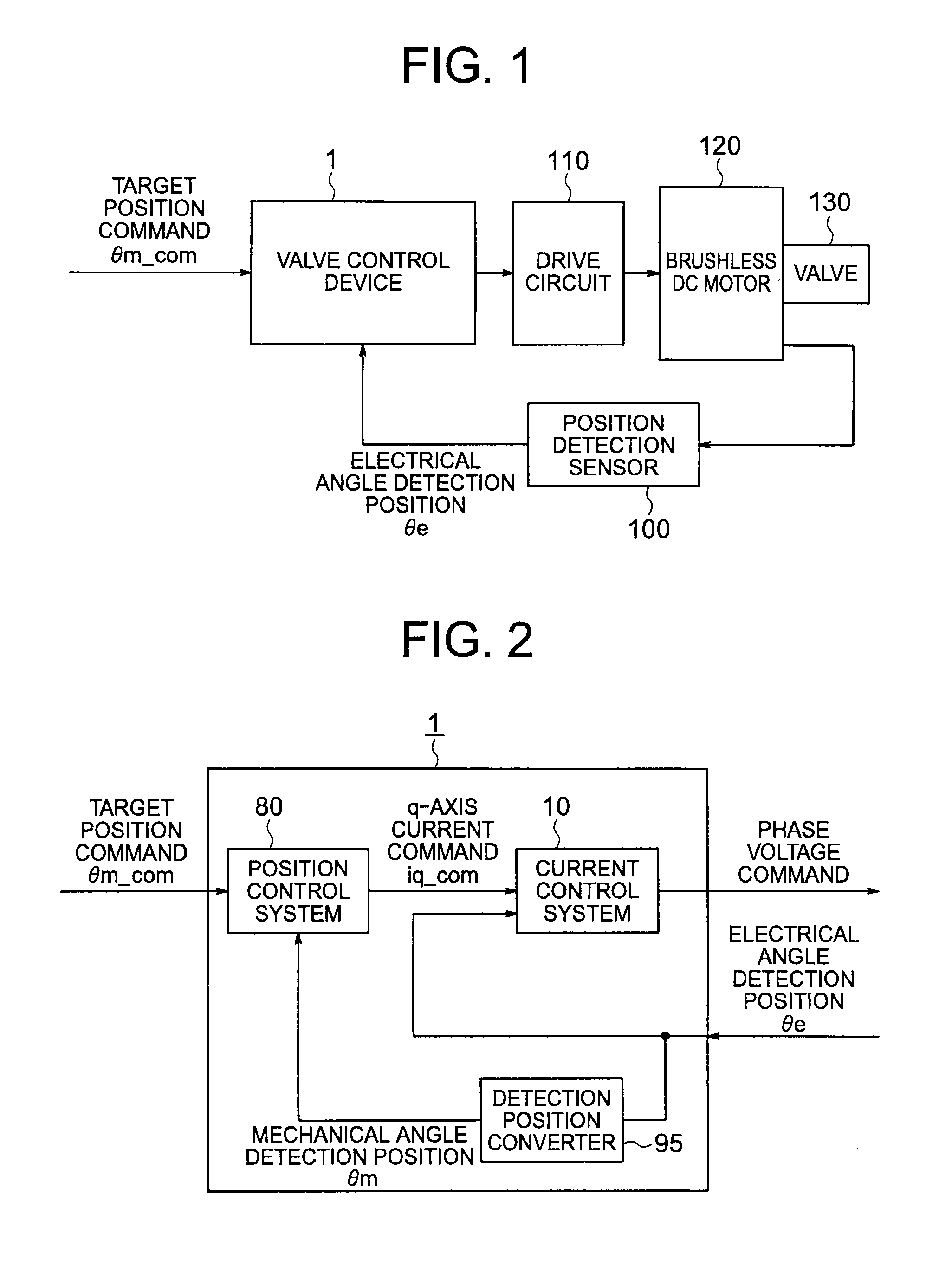Valve control device
a control device and valve technology, applied in the direction of electric controllers, dynamo-electric converter control, dynamo-electric gear control, etc., can solve the problem of presenting an oscillatory response defect, achieve the effect of generating motor torque, preventing a collision of valves, and reducing the speed by motor torqu
- Summary
- Abstract
- Description
- Claims
- Application Information
AI Technical Summary
Benefits of technology
Problems solved by technology
Method used
Image
Examples
first embodiment
[0033]A description is given of the valve control device according to a first embodiment of the present invention referring to FIGS. 1 to 14. FIG. 1 is a block diagram illustrating an overall configuration of a control system including the valve control device according to the first embodiment of the present invention. It should be noted that like numerals denote like or corresponding components throughout the drawings hereinafter.
[0034]In FIG. 1, the control system includes a valve control device 1, a position detection sensor 100, a drive circuit 110, a brushless DC motor 120, and a valve 130.
[0035]In FIG. 1, an actuator for driving the valve 130 is the brushless DC motor 120. Moreover, the position detection sensor 100 of the pulse output type such as a Hall IC is provided to the brushless DC motor 120. The resolution of the position detection sensor 100 corresponds to six steps per period of the electrical angle, namely the electrical angle resolution is 60 deg.
[0036]A spring (n...
second embodiment
[0081]A description is now given of a valve control device according to a second embodiment of the present invention referring to FIG. 15. FIG. 15 is a block diagram illustrating a configuration of a current control system of the valve control device according to the second embodiment of the present invention.
[0082]In FIG. 15 A, a current control system 10A of the valve control device 1 according to the second embodiment of the present invention includes a phase corrector 90A for providing an optimal phase correction amount in accordance with the motor angular velocity. The current control system 10A is different from the current control system 10 of the valve control device 1 according to the first embodiment, in which the base corrector 90 sets the phase lag amount dθe as the fixed value determined by the maximum motor angular velocity. Thus, while the phase correction amount (equal to dθe) is constant according to the first embodiment, the phase correction amount changes in accor...
third embodiment
[0087]A description is now given of a valve control device according to a third embodiment of the present invention referring to FIG. 16. FIG. 16 is a block diagram illustrating a configuration of a current control system of the valve control device according to the third embodiment of the present invention.
[0088]The valve control device 1 according to the third embodiment of the present invention has the following configuration. In the current control system 10 of the valve control device 1 according to the above-mentioned first embodiment, the estimated current for each of the phases is calculated using the actual phase voltage in place of the phase voltage command.
[0089]When the actual phase voltage is used, an actual U-phase voltage and an actual V-phase voltage are respectively smoothed by filters 91 and 92 in order to attenuate noise in synchronism with a PWM carrier frequency, thereby using the Actual U-phase voltage and the Actual V-phase voltage for the current estimation. ...
PUM
 Login to View More
Login to View More Abstract
Description
Claims
Application Information
 Login to View More
Login to View More - R&D
- Intellectual Property
- Life Sciences
- Materials
- Tech Scout
- Unparalleled Data Quality
- Higher Quality Content
- 60% Fewer Hallucinations
Browse by: Latest US Patents, China's latest patents, Technical Efficacy Thesaurus, Application Domain, Technology Topic, Popular Technical Reports.
© 2025 PatSnap. All rights reserved.Legal|Privacy policy|Modern Slavery Act Transparency Statement|Sitemap|About US| Contact US: help@patsnap.com



